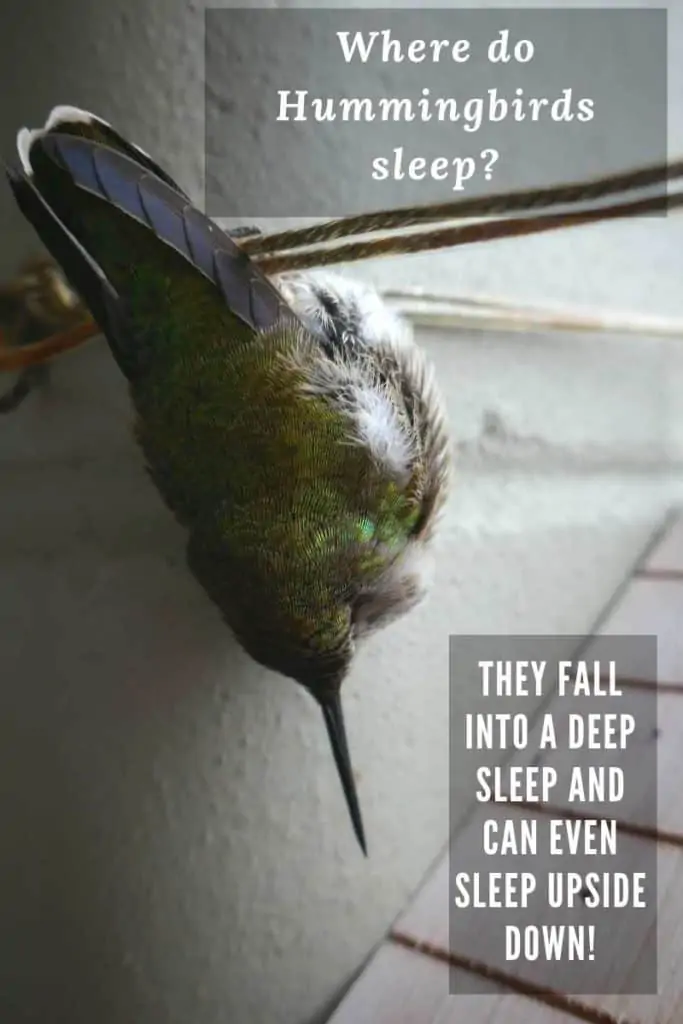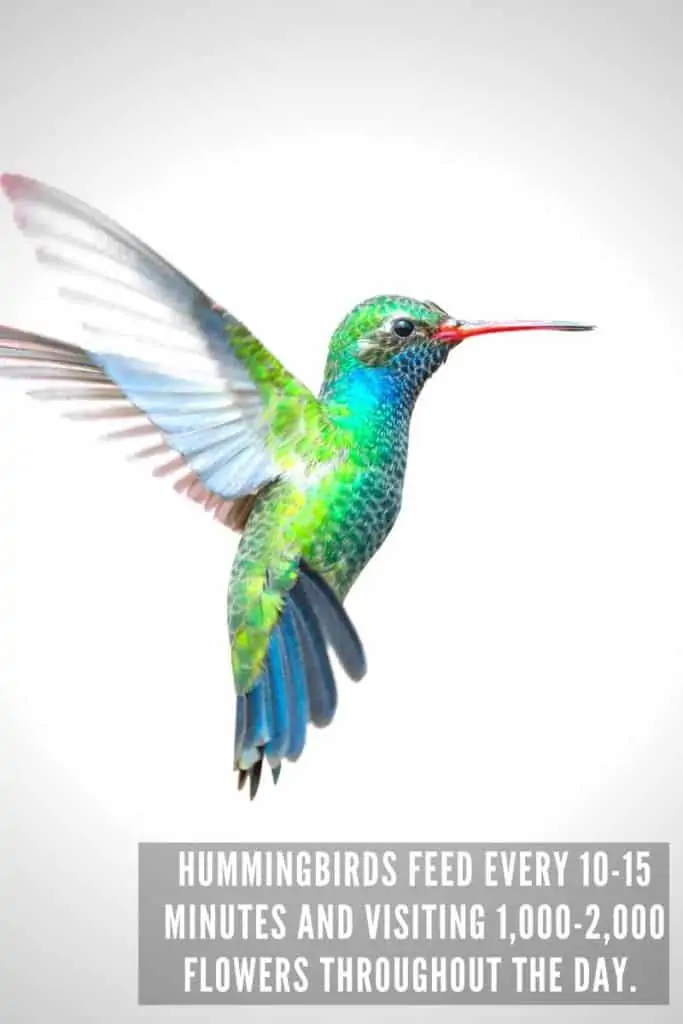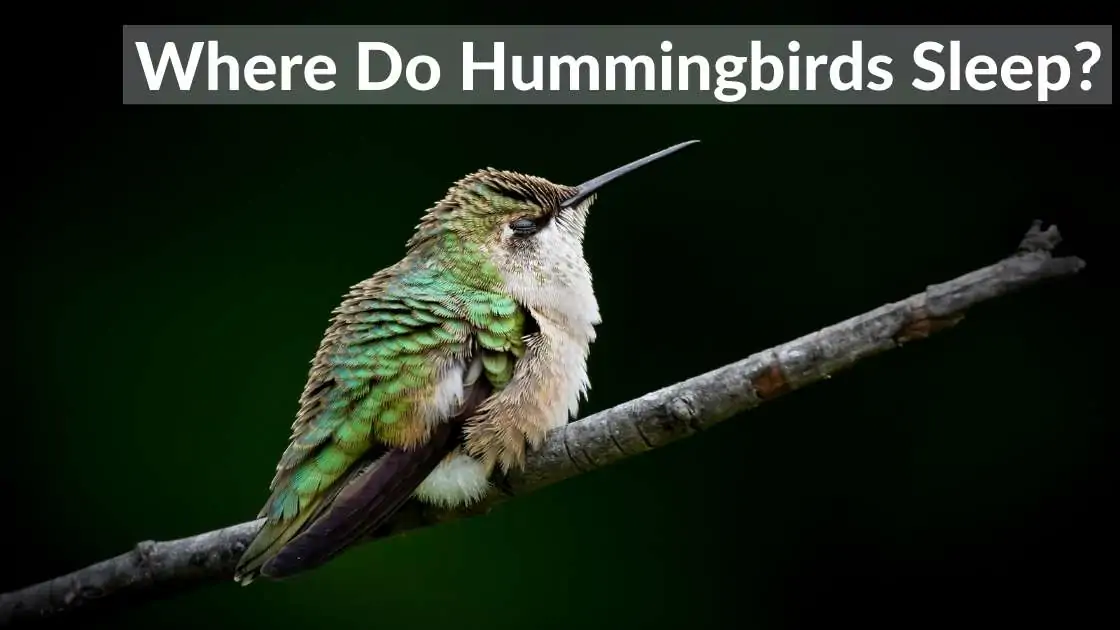Hummingbirds are quickly becoming one of the most popular birds in North America. They are beautiful creatures that many people enjoy watching, hummingbirds mean good luck, but where do they sleep when they’re not flying around looking for food?
Table of Contents
The answer to this question may surprise you! Hummingbirds don’t actually sleep in the traditional sense. They spend much of their time sleeping while perched on a branch or wire where it’s safe and warm. They also take naps during the day – sometimes as long as two hours at a time!

The cold-blooded metabolism of hummingbirds
Cold-blooded animals include fish, amphibians, and reptiles. In these creatures, the process where molecules are broken down into simpler chemicals called ions is carried out through a system of tubes or organs called “gills” that contain blood vessels to carry oxygen from the surrounding water or air.
Hummingbirds have a very different kind of metabolism which is fueled by the nectar they consume during their time feeding on flowers for sugar-rich energy. They also get carbohydrates from humans who feed them food like bananas in order to keep themselves going when all other sources of food disappear due to winter weather conditions!
What else do hummingbirds eat? Hummingbirds can be seen eating bugs including flies, spiders, small insects, and even tree sap!
Hummingbirds have a very high metabolism and must eat all day long just to survive. They consume about half their body weight in bugs and nectar, feeding every 10-15 minutes and visiting 1,000-2,000 flowers throughout the day.
It is almost like hummingbirds are on a sugar rush! With the quickest metabolism and heartbeat out of all homeotherms, it may be hard to believe that these dainty birds weigh less than an ounce. In fact, their heart rate can reach over 1200 beats per minute – or twice as fast as our own human pulse at rest (60-100 bpm).
A hummingbird’s high metabolism requires it to eat as much nectar in a day, if not more than its own body weight. To compare this is like an average human eating half their weight of sugar every day which would be about 140,000 calories; that’s the equivalent of 280 Big Macs or 19.5 kilograms worth of butter!

When humminbirds sleep
When hummingbirds sleep, they go into a state of Torpor that is much like the sleep experienced by animals in winter (hibernation). It’s really deep sleep and their metabolism will slow to one-fifteenth (1/15) of normal speed! Their body temperature drops to hypothermic levels while their heart rate slows down significantly – sometimes stopping altogether for periods as long as 2 hours at a time. By sleeping this way, these remarkable birds can save up 60% of available energy which might otherwise be wasted through regular activities such as flying or feeding themselves on flowers from dawn until dusk every day without rest.
Hummingbirds are known for their speedy speeds and quick nectar-gathering, but they can also be quite slow when the need comes. When in Torpor state (energy-saving mode) or asleep at night, hummingbirds hang upside-down to rest their wings which have been flying nonstop during daylight hours. If you find a sleeping bird that appears dead – don’t panic! They’re more likely just catching some zzzs than anything else; if not handled with care it could disrupt them from healing properly without even realizing it’s happening while we watch on curiously like vultures waiting for death to come knocking instead of life waking up fresh again after its long slumber.
It takes anywhere from 20 minutes – to 1 hour for them to recover after being awoken from the Topor state by environmental changes like the sun coming out or looking for food. Usually, hummingbirds will eat 25% of their daily intake as soon as they wake up too!
However, if the bird is very weak it may not survive Torpor because this process rids any excess fat on the hummer’s body while saving more nutrients with less consumption during that time period.
Interestingly, hummingbirds even snore while they sleep, see the video below.
The hummingbird has a fascinating way of sleeping. They fluff out their feathers to maximize the insulation their small wings can provide, and they appear like cotton balls with beaks pointing sharply upward! Their heartbeat slows down so much that you may think they’re not breathing – but don’t worry! These tiny birds are alive!
RichardAlois recommends…

The Genius of Birds
An award-winning science writer tours the globe to reveal what makes birds capable of such extraordinary feats of mental prowess.
- “Lovely, celebratory. For all the belittling of ‘bird brains,’ [Ackerman] shows them to be uniquely impressive machines . . .” —New York Times Book Review
- “A lyrical testimony to the wonders of avian intelligence.” —Scientific American
Where do hummingbirds sleep?
The hummingbird is an extremely small and weightless creature, so finding a safe place to sleep and fall into Torpor, is paramount.
When hummingbirds sense that the night is nearing, like many other animals who sleep at this time of day, they will start preparing themselves by settling in their favorite sheltered perching places where they feel safe both while sleeping and waking up again.
However, hummingbirds have a bit of a feeding frenzy every time the sun sets and night approaches to store up enough nutrition for themselves so that they can make it through.
Hummingbirds often sleep in recessed caves that provide shelter from the wind, cold, and rain. These are usually deeper into trees or shrubbery to avoid predators where they can find twigs for a roosting spot too!
If the hummingbird is female, the mother hummingbird will sit and sleep on the nest if it is her and she has baby birds that cannot care for themselves. She does this to protect them from predators or other threats, which may come into their territory while they are away feeding.
The hummingbird’s feet are so tiny that they can only perch on a branch or tree twig. Their legs are also not very strong, because all the power is in their wings and beaks for flying around to find flowers with nectar. This makes it impossible for them to hop like most birds do when walking from place to place; instead, this bird must move sideways by balancing its body along one leg while using the other as leverage (similarly how I would walk if my shoelace were untied). As you probably guessed already: no hopping means less sleep!
And sometimes you’ll find hummingbirds on a branch that is upside down and they’re hanging on. But they’ve loosened their grip, just enough for them to catch a snooze while the day gets brighter before sunrise. They’re in torpor but still waiting for its time to feed again when flowers open up with sunlight coming out from behind the morning clouds! Occasionally people find hummingbirds hanging from a tree still gripping the branch, and they think that they’re dead. When it turns warmer outside, these little birds will start flapping their wings again and fly off to feed!
Conclusion
The Hummingbird is a small, colorful bird that can be found in the Americas from Alaska south to Fireland. They prefer humid climates and are attracted to flowers of many varieties including honeysuckle, fireweed, rhododendron, and lilies. You may have seen them drinking nectar at hummingbird feeders or flitting around your garden–but if you’ve ever wondered where they sleep, we now know! A recent study has shown that most hummers spend their nights roosting on branches near water sources like ponds or streams. With such an interesting habitat preference for this tiny bird, it’s no wonder scientists love studying these little dynamos!
However! What if humans could enter a torpor state for extended periods of time? This idea is still unknown, but what would it be like to not need food and lose energy in freezing cold weather? I’d love to try out for a day or so…




